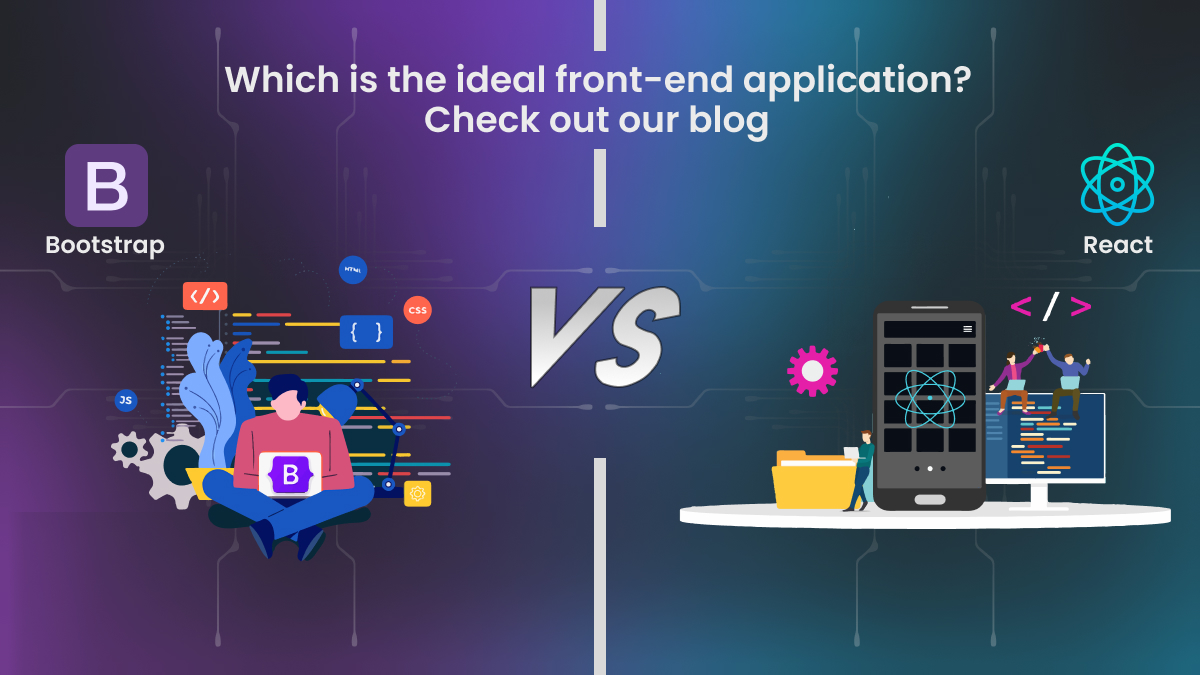Introduction to Front-End Apps
When it comes to front-end apps, there are two main options: Bootstrap and React. It’s important to choose the right method for your project, as both Bootstrap and React have their pros and cons.
Bootstrap is a popular front-end app framework that is used by many developers. It can be used easily and has various features that help in faster development. However, it can be difficult to customize and may not be suitable for all projects.
React is a newer front-end app framework that is gaining popularity among developers. It is more flexible than Bootstrap and allows for more customization. However, it can be difficult to learn and may not be suitable for all projects.
What is Bootstrap?
Bootstrap is a front-end web development framework that provides ready-made, reusable components for creating websites and web applications. Bootstrap is a popular front-end component library that helps developers quickly build responsive and mobile-first websites.
Bootstrap includes a CSS file that includes a series of rules that govern how HTML elements should be displayed on the screen. These rules are written in Less, a CSS pre-processor language. Bootstrap also includes JavaScript files that provide additional functionality, such as models (pop-ups) and carousels (slideshows).
To use Bootstrap, you’ll need to have basic knowledge of HTML and CSS. You’ll also need to be familiar with Less, as well as the Bootstrap grid system.
What is React?
React is a great JavaScript library for creating user interfaces. It’s easy to read and maintain, and it lets you develop reusable components as well. When used with a framework like React Native, it can also be used to build native mobile apps.
Pros and Cons of Bootstrap and React
Bootstrap and react are both popular front-end development frameworks. Each has its pros and cons that should be considered when choosing one for your project.
Bootstrap Pros:
- Bootstrap is a very comprehensive framework that comes with a lot of pre-built components that can be used to build websites quickly.
- Bootstrap is easy to learn and use, even for beginners.
- Bootstrap is well-documented and has a large community of developers who can provide support.
Bootstrap Cons:
- Bootstrap can be opinionated about how websites should be built, which may not always fit the needs of a project.
- Bootstrap websites can sometimes look similar because of the limited customization options.
React Pros:
- React is a declarative, component-based framework that makes building complex web applications easier.
- React code is easy to read and understand.
- React has excellent performance due to its virtual DOM implementation.
React Cons:
- React requires more time and effort to learn than some other frameworks.
- React uses JavaScript, which some developers may not be familiar with.
Comparing Bootstrap and React
When it comes to choosing a front-end app, the two most popular options are Bootstrap and React. Both have their pros and cons, so it’s important to weigh those before making a decision.
Bootstrap is a framework that includes pre-built CSS and JavaScript components. This makes it faster to get started with than react, which is a JavaScript library. However, Bootstrap can be harder to customize than react since you’re working with pre-built components.
React is more flexible than Bootstrap since it doesn’t include pre-built components. This means it takes longer to get started with, but you have more control over the final product. React is also better suited for large-scale applications since it can be broken down into smaller pieces.
So, which should you choose? It depends on your needs. If you need a quick solution that’s easy to use, Bootstrap is a good option. If you need more control over the final product and don’t mind taking a bit longer to get started, react is the way to go.
Tips for Choosing the Right App
When it comes to choosing a front-end app, there are a few things you should take into consideration. Here are a few tips to help you choose the right app for your needs:
- Consider your development experience. If you’re new to front-end development, you may want to choose an app that is easier to learn and use. However, if you have experience with front-end development, you may be able to handle a more complex app.
- Consider the size of your project. If you’re working on a small project, you may not need all the features offered by a larger app. Conversely, if you’re working on a large project, you’ll need an app that can handle all the complexities of your project.
- Consider your budget. Few useful apps are available for free to use while for others you have to pay some amount. Be sure to consider your budget when choosing an app.
- Consider the features offered by each app. The features of each app are what make it unique and special.
Summary
Deciding which front-end application to use when developing a web application can be difficult. Both Bootstrap and React offer developers great options for creating user-friendly interfaces, but they each have their unique advantages.
Ultimately, selecting the right app comes down to understanding the project requirements and knowing which one will work best with your budget, timeline, and skillset. With bootstrap offering a more familiar approach for beginners and react providing greater customizability for experienced developers, you now have a better understanding of what both applications can do for your project.


